500x334.jpg)
Beta Space: Pae White
https://sjmusart.org/exhibition/beta-space-pae-white
The work of internationally renowned artist Pae White transcends nearly all traditional boundaries—between art and design, craft and fine art, architecture and installation, theory and practice. Her probing curiosity with the world manifests in her transformation of ordinary objects and phenomena—chandeliers, clocks, popcorn, tapestries, birdsongs, fog, smoke—into exhilarating experiences that defy logic yet remain oddly familiar. Always kinaesthetic—as much a bodily as visual experience that plays with the senses—her work is as alluring as it is ambiguous, suggesting that things may not be as they may seem. The handmade nature of her work, combined with sophisticated technologies and inventive processes, allow for a high degree of improvisation.
In celebration of SJMA’s 50th anniversary, White presents a compendium of new works and recent installations for the sixth iteration of the Museum’s exhibition series “Beta Space.” White’s peripatetic practice across various media and disciplines captures the spirit of this series: her work brims with artistic risk-taking and experimentation, reflecting the wildly creative and innovative ethos of Silicon Valley.
Beta Space: Pae White features newly made artworks that further White’s interest in shifting our associations and perceptions of everyday objects, materials, and phenomena. In addition, the exhibition features two monumental installations that upend traditional ideas regarding architecture, museum display practices, fine art, and craft. foreverago (2017) is the artist’s largest tapestry to date, at 127 feet long. Shown in the United States for the first time, it will meander through the gallery, creating a sinuous wall-like structure that presents both the front and back of the weaving. Revolutionizing the genre of tapestry for the 21st century, White relied on the help of skilled artisans while employing advanced digital imaging techniques to weave together colorful cotton, cashmere, and metallic threads, and used custom software that randomizes distribution patterns to produce her seemingly chaotic scene. Part of the artist’s ongoing series “Bugz + Drugs,” foreveragoexplodes with a cacophony of insects—ladybugs, dragonflies, grasshoppers, and crickets—descending on plants known for their psychoactive, calming effects: mushrooms, poppies, and cannabis. Renderings of antique Japanese kimono fabric samples and Byzantine icons further enhances an already rich and visually abundant composition.
In her intuitive approach to materials and images, White maintains a critical eye on popular manifestations and wildly kitsch derivatives of high modernist ideals. In AGAMEMNOMICS (2013), she presents a massive assemblage of chess pieces of her own device. While scouring the design collections of the MAK Museum of Applied Arts in Vienna, the artist encountered a trove of forgotten toys made by an unknown Viennese designer in the 1920s. From this group she fashioned a chess set and sent images of nine objects to artisans and fabricators in China, Ethiopia, Germany, Lithuania, and Mexico, as well as to artists working in the Los Angeles area. Each workshop rendered interpretations of these objects in materials of their own specialty: glass, wood, clay, porcelain, plastic, and rubber. Leaving her project to chance and spontaneity, White rescued these toys from the confines of the design archive and cast them back into realms of the imagination and play.
Sponsored by the Richard A. Karp Charitable Foundation, Doris and Alan Burgess, Theres and Dennis Rohan, Tad Freese and Brook Hartzell, and Mary Mocas and Marv Tseu. Additional support provided by Hildy Shandell Beville and Ross Harwood Beville, and from 1301PE, Los Angeles.
Supported, in part, by a Cultural Affairs grant from the City of San José.
- Contact:
- Frederick Liang
- fliang@sjmusart.org
- 4082915374


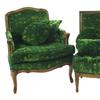
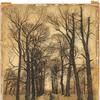


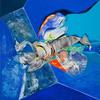
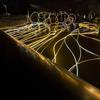

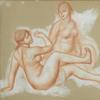
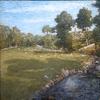

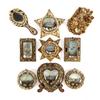

![Peter Paul Rubens (Flemish, 1577–1640), After Titian (Tiziano Vecelli) (Italian [Venetian], c. 1488–1576), Rape of Europa, 1628–29. Oil on canvas, 71 7/8 x 79 3/8 in. Peter Paul Rubens (Flemish, 1577–1640), After Titian (Tiziano Vecelli) (Italian [Venetian], c. 1488–1576), Rape of Europa, 1628–29. Oil on canvas, 71 7/8 x 79 3/8 in.](/images/c/e2/2e/Jan20_Rape_of_Europa100x100_c.jpg)
